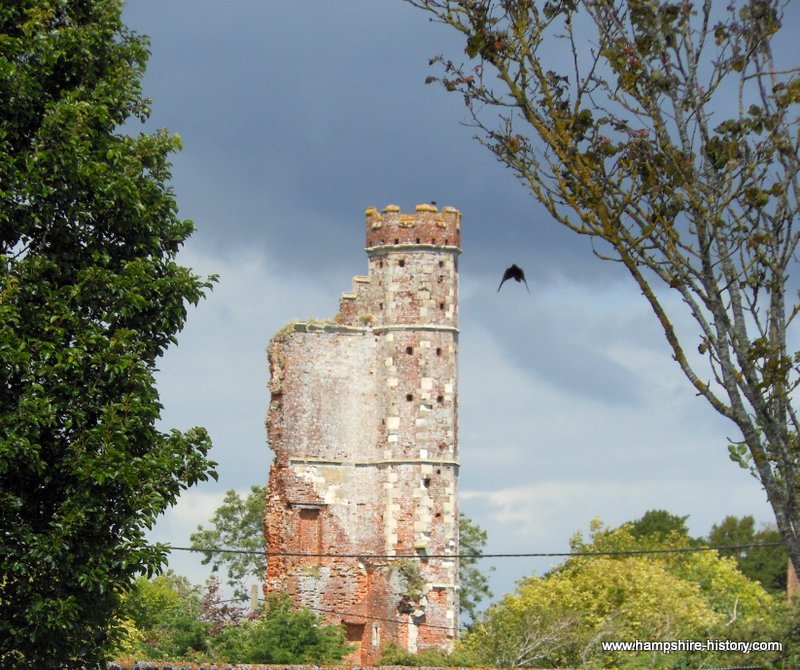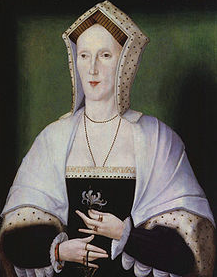Warblington Castle
The remains of Warblington Castle are easy to miss, tucked away down a little lane looking out over the Solent
Unless you know where to look, it’s easy to miss the last remaining part of the gatehouse of Warblington Castle, situated in the tiny hamlet of Warblington in Hampshire but this once splendid, fortified house, was the setting for some of Englands most important families and the political games they had a part in.
- Warblington is thought to be named after s Saxon invader, Weorbald, who, in about 500AD found a quiet port within Langstone harbour. The area had been previously settled by the Romans who built a farmstead on the fertile land.
- The area would always have provided a good living, its warm climate, rich soils, fresh water and proximity to the sea was all that was necessary for people to prosper here.
- It is mentioned in the Domesday Book with a population of about 120 people. At this point in its history Warblington was supporting a larger population that nearby Emsworth, with a mill and a church but as with so many of the settlements in this sheltered part of the coastline, falling sea levels and silting up of the creeks meant that it ceased to be able to operate as a port and fishing became increasingly difficult. By the C12th, Warblington became a lesser settlement and Emsworth grew.
- The Black death of 1348-9, ravaged Hampshire as it did the rest of the country and the population of Warblington was considerably diminished.
- By the C15th the remaining villagers were cleared from the land to create a private deer park for the then lord of the manor, Richard Neville, Earl of Warwick, who was known as “The Kingmaker” during the War of the Roses. Click here to find out more about how these players were involved in the ‘War of the Roses’.
The Pole family connection, with a bit of King Richard III as well
The manor of Warblington, has like so many other manors, changed hands over centuries, as people fell in and out of favour.
In 1514, after being passed from family to family it was eventually restored to Margaret Pole, Countess of Salisbury, sister and heir of Edward earl of Warwick.
Margaret Pole built the large fortified house between 1515 and 1525. The house had a moat, staterooms, its own chapel, apartments and an armoury surrounding a great courtyard.
- Margaret Pole was the daughter of George of Clarence who was the brother of King Edward IV and King Richard III.
- She was one of two women in sixteenth-century England to be a peeress in her own right with no titled husband, she was given in marriage by Henry VII to his cousin Sir Richard Pole.
- Her complicated family background and her multiple links to the royal family made her a formidable person.
- She was very well educated and quite outspoken and her favour at court varied.
- She had a dispute over land with Henry VIII in 1518 however in 1520 she was back in favour and was appointed Governess to Henry’s daughter, Mary.
- When Princess Mary was declared a bastard in 1533, the Countess refused to give Mary’s gold plate and jewels back to Henry. When Mary’s household was broken up at the end of the year, Margaret wanted to continue to serve Mary at her own cost, but was not permitted.
- She had four sons, all ambitious and when they became involved with the Duke of Buckingham, Margaret found herself removed from court and from favour until she was restored by the king in 1525.
The dangers of upsetting King Henry VIII
Margaret’s had abandoned her son Reginald, to the church, where he managed to create an impressive life for himself, eventually becoming Archbishop of Canterbury but he stirred up troubles for himself and his family as he warned the King of the dangers of marrying Anne Boleyn. He wrote a pamphlet in which he denied Henry’s position on the marriage of a brother’s wife and denied the royal supremacy. Pole also urged the princes of Europe to depose Henry immediately.
His brothers and mother, staunch Roman Catholics had all been conspiring and corresponding with him and in 1538 they were all arrested. The family lost their lands and titles, including Warblington Castle. A tunic bearing the five wounds of christ was supposedly discovered at Warblington, testifying to her Catholicism.
Margaret Pole, was held in the Tower of London for two and a half years, until taken to the executioners block, fighting fiercely all the way.
The fact that this conspiracy was played out at the castle at Warblington is not a surprise, it was conveniently situated on the southern coast for messages and people to move backwards and forwards at will.
The first phase the castle was to play in the history of England was over, the Manor now passed to the Cotton family and a whole new era of intrigue unfolded.


